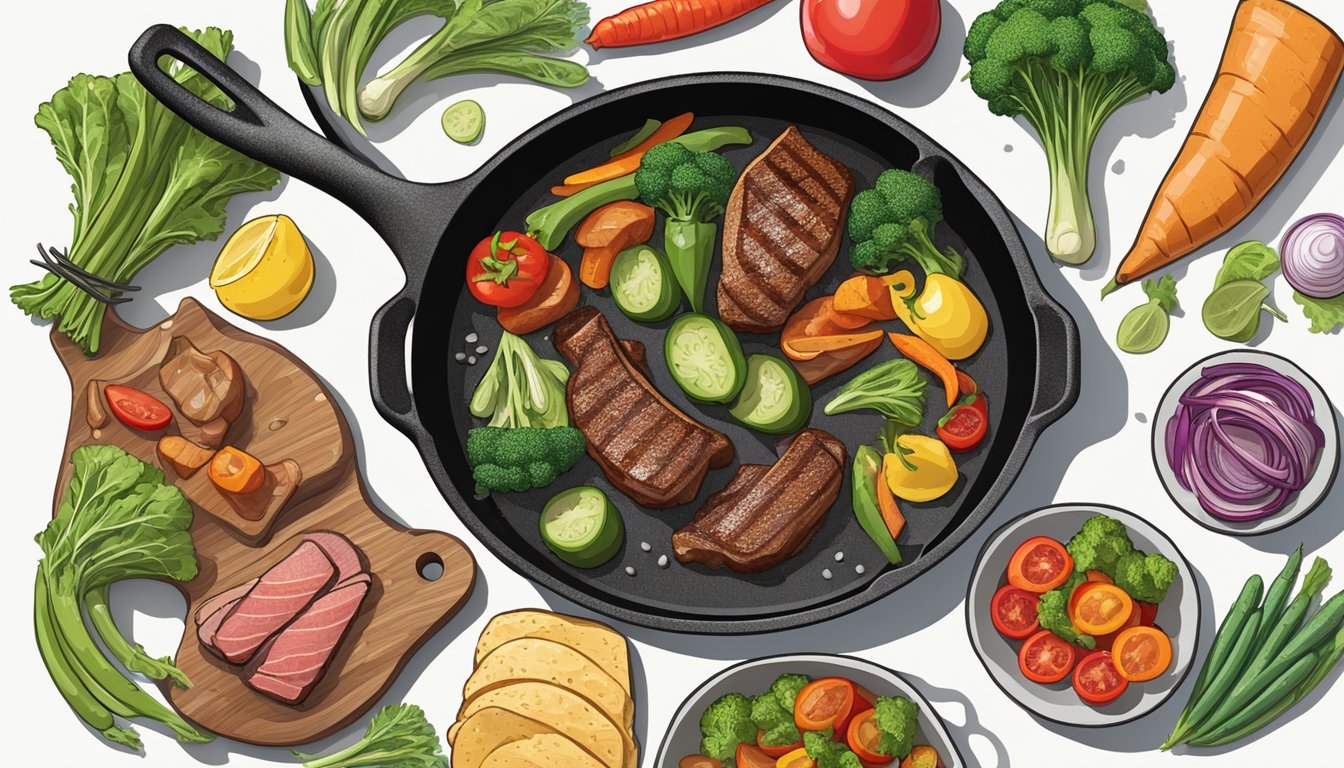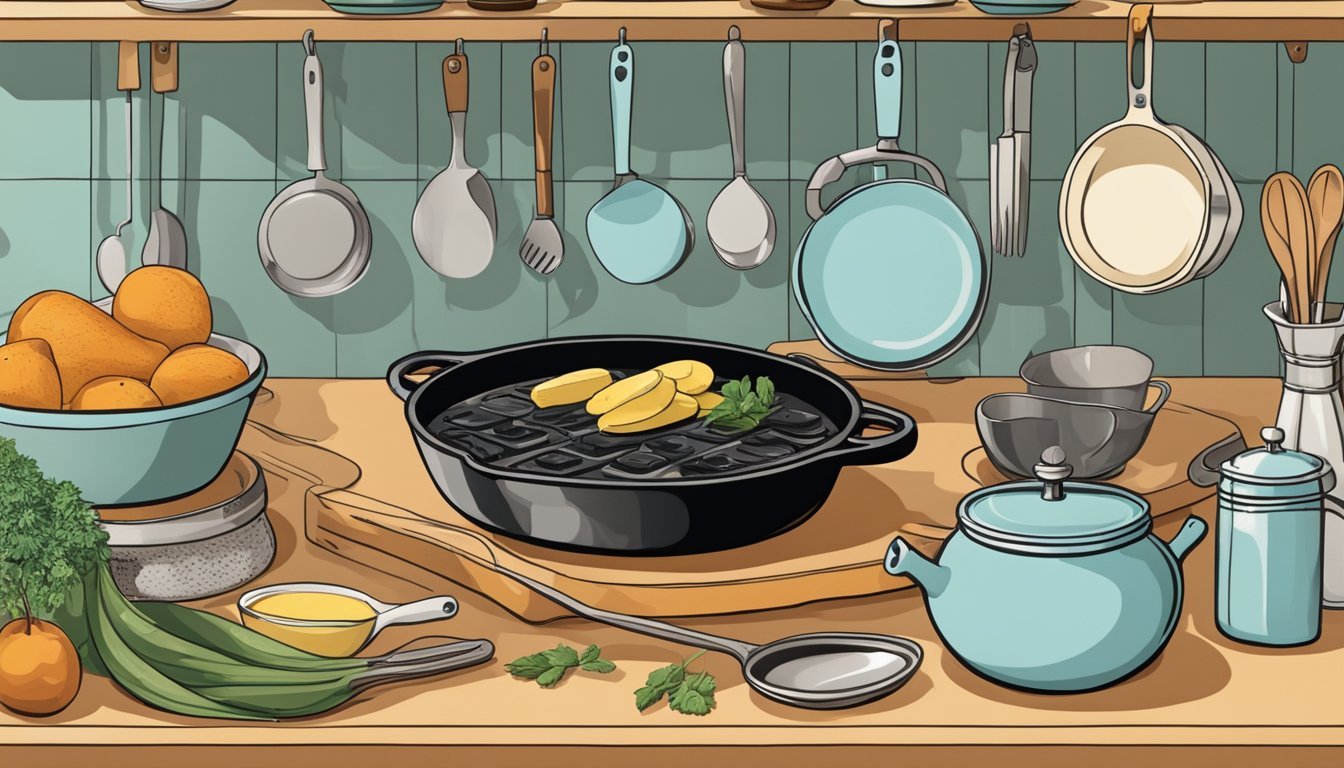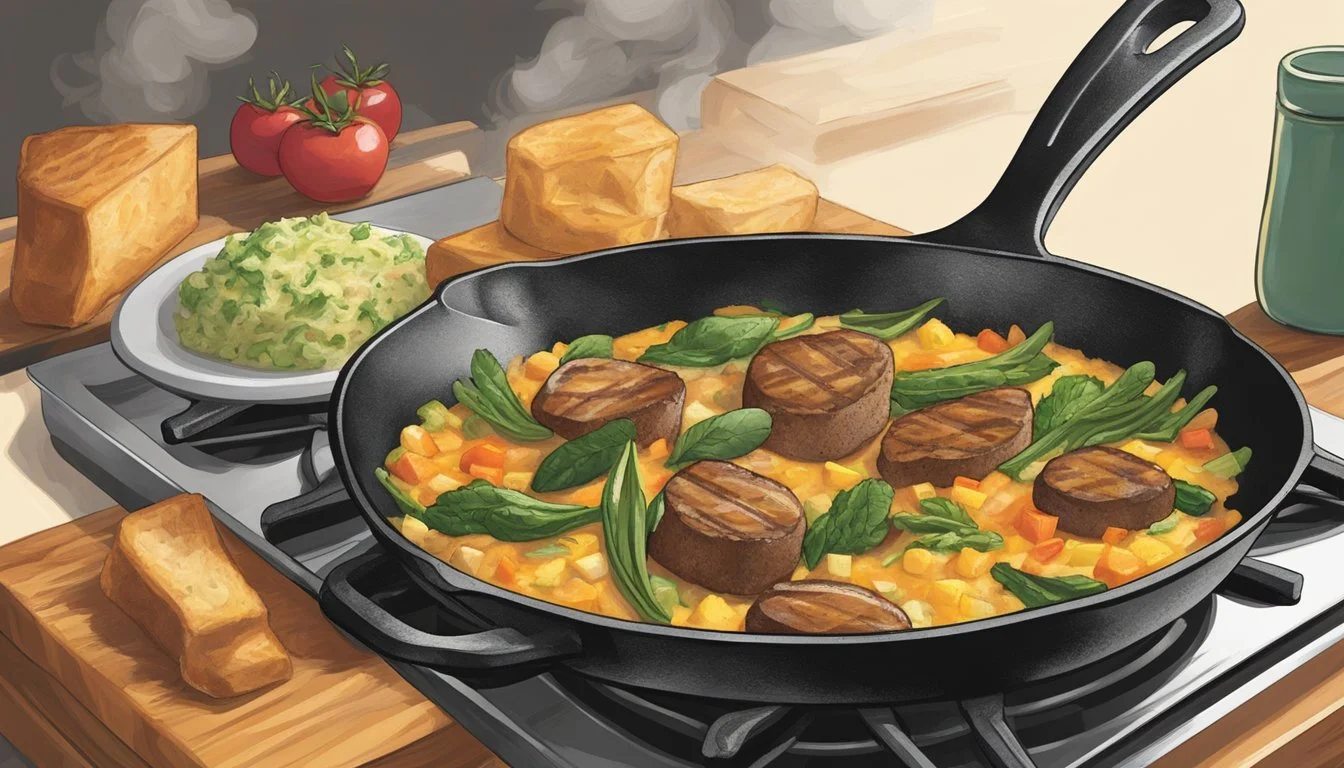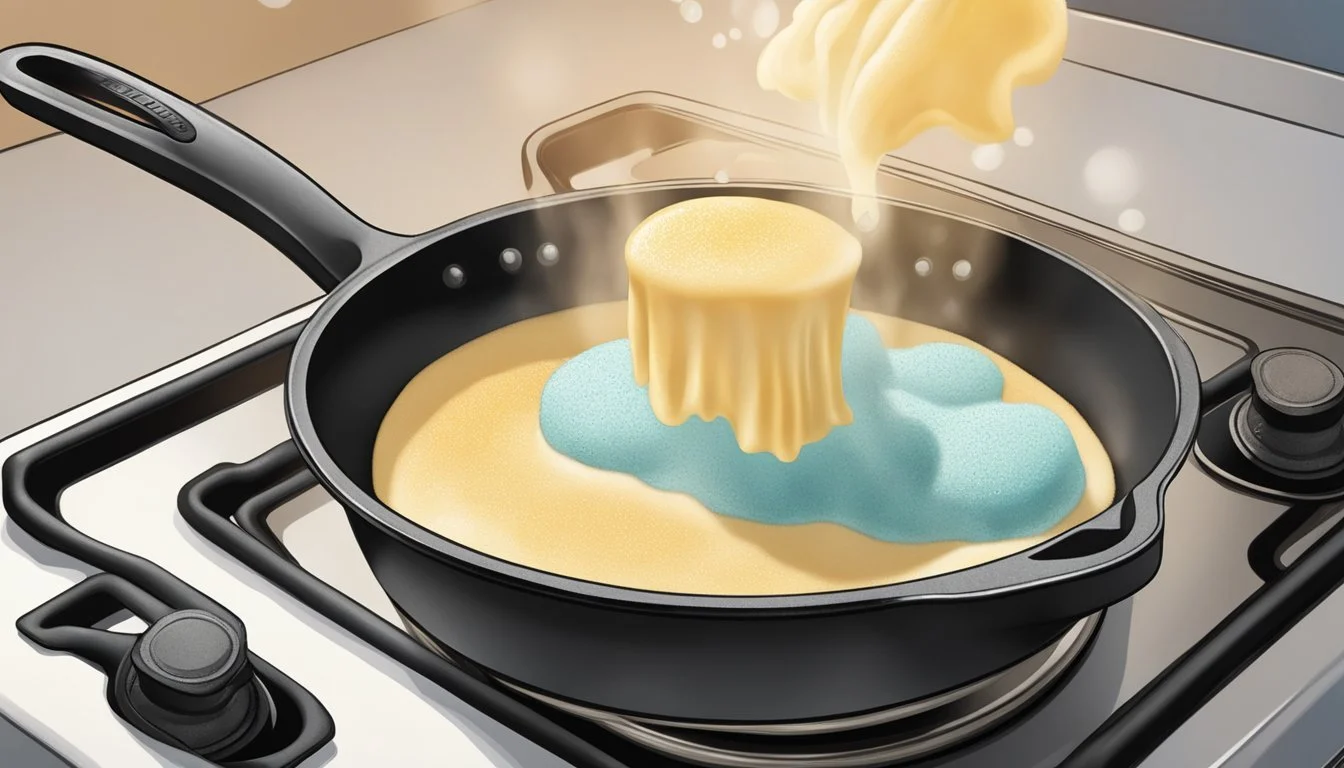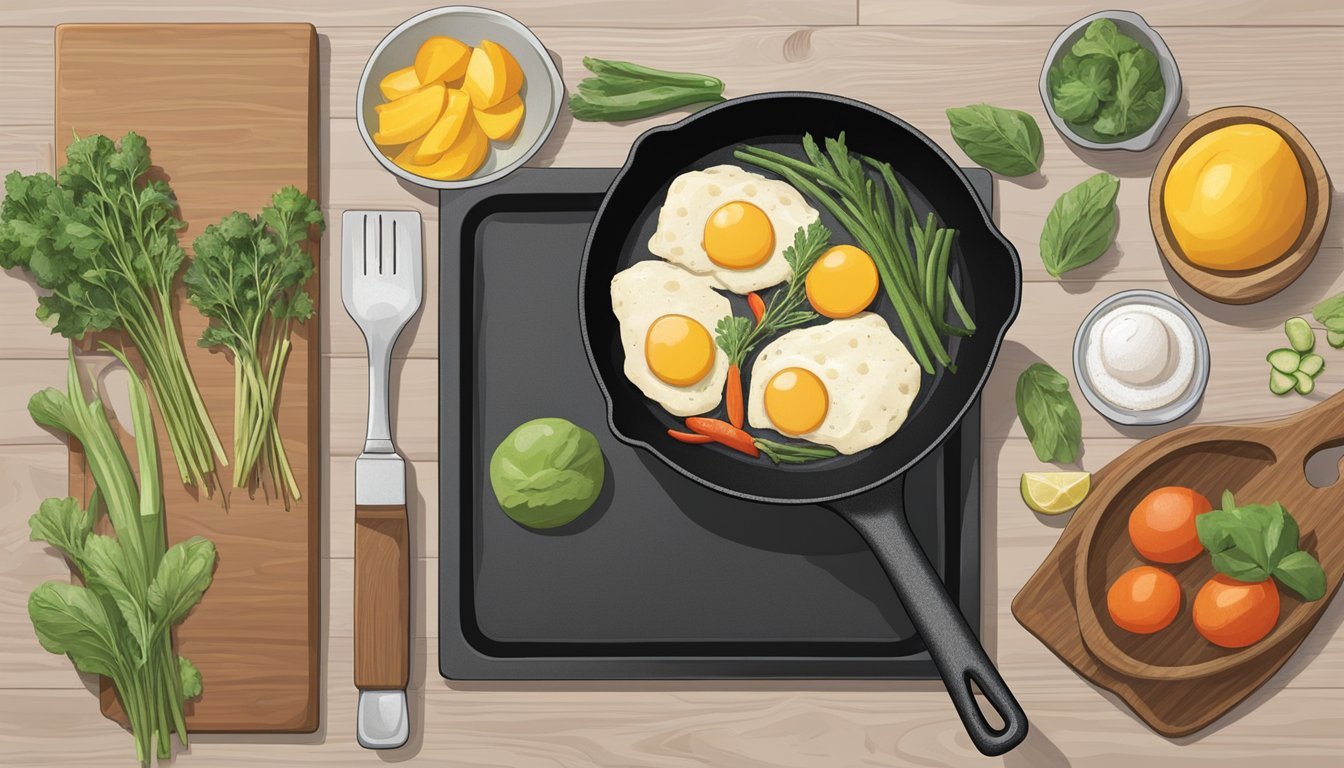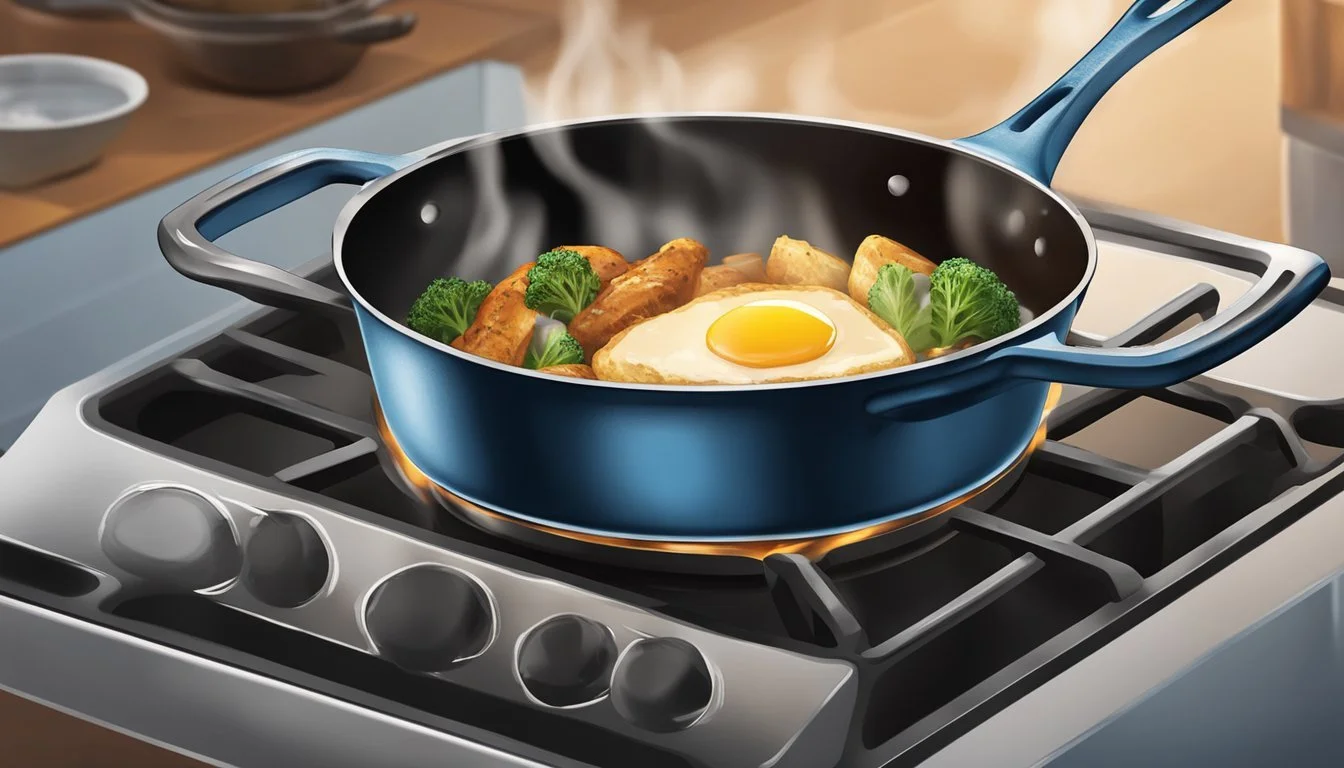Cast Iron for the Solo Chef
Quick and Easy Recipes for One
Cooking for one doesn't have to mean simplistic dishes or microwave meals. A mini cast iron skillet can transform the solo dining experience, offering the cherished qualities it shares with its larger counterpart—durability and versatility—but tailored for individual meal preparation. Its small size is perfect for portion control and fits comfortably on crowded stovetops, in cramped ovens, or in tiny kitchenettes. The thick, heavy construction of cast iron skillets ensures even heat distribution, enhancing the flavor and texture of the food cooked within.
The benefits of a mini cast iron skillet extend beyond even cooking; its indestructible construction makes it a long-lasting addition to any kitchen arsenal. These skillets become seasoned over time, building up a non-stick surface that is ideal for cooking a variety of foods. Plus, the ability to go from stovetop to oven to table makes them an exceptional choice for chefs cooking solo.
While large cast iron skillets may be the go-to for family-sized meals, the mini cast iron skillet has carved out its niche for the solo chef. It's particularly adept for breakfast favorites, quick lunches, savory dinners, and even single-serve desserts. Each recipe scales down to the size of the pan while keeping the integrity and robust flavors associated with cast iron cooking. These skillets prove that good things indeed come in small packages.
Cooking solo can be a delightful and rewarding experience, and cast iron cookware perfectly complements the lifestyle of the solo chef. The rich heritage of cast iron cookware history intertwines seamlessly with the principles of cast iron modern living, offering a timeless yet contemporary approach to culinary artistry.
For the solo chef, the convenience and charm of mini cast iron cookware provide the perfect canvas for crafting individual portions of delightful dishes. Whether it's the art of cast iron roasting or the creation of flavorful vegetarian and vegan cast iron recipes, these smaller cookware pieces cater to a wide range of culinary preferences with ease.
In addition to their functionality, cast iron accessories complement these cookware pieces, adding to their appeal and practicality. The versatility of cast iron extends to the crafting of meals for one, allowing the solo chef to enjoy the benefits of this cherished cookware while embracing the principles of cast iron community cooking through culinary exploration and sharing experiences with others.
For the solo chef, cast iron cookware stands as a reliable and cherished companion, offering a versatile and practical tool for every culinary adventure.
History and Benefits of Cast Iron Skillets
In the realm of cookware, the cast iron skillet stands out for its rich history and multifaceted advantages in the kitchen, notably its even heat distribution and robust construction.
Origins of Cast Iron Cookware
The cast iron skillet has its roots in the early modern period with the first American cast iron pot created in 1642 at the Saugus Iron Works in Massachusetts. This marked the beginning of cast iron cookware in America, a tradition that would grow and be refined with the advent of the Industrial Revolution in the 19th century. This period enabled greater precision in the production of cast iron, significantly enhancing the quality and utility of the cookware.
Advantages of Cooking with Cast Iron
Cast iron skillets are lauded for their indestructible construction, which when maintained properly, can last for generations. Not only do they offer exceptional longevity, but their even heat distribution also ensures consistent cooking results. A cast iron skillet is a versatile tool in the kitchen; it can go from stovetop to oven with ease, lending itself to a vast array of cooking methods. Here's a breakdown of the benefits:
Even heating: The skillet uniformly absorbs and retains heat, reducing hot spots that can cause uneven cooking.
Durability: Cast iron is known for its sturdy construction and can withstand high temperatures without damage.
Versatility: These skillets can be used for baking, frying, searing, and more, both on the cooktop and in the oven.
Non-stick surface: When seasoned properly, cast iron skillets develop a natural non-stick coating that improves with use.
Flavor enhancement: Regular use contributes to flavor-building layers known as 'seasoning' that enrich the taste of food cooked in cast iron.
Selecting the Right Skillet
Choosing the appropriate skillet size and understanding its maintenance are critical for any solo chef looking to harness the benefits and flavor that cast iron offers, especially when working with compact cooking surfaces.
Mini Skillet Considerations
When selecting a mini cast iron skillet, a solo chef should consider the skillet's diameter, typically ranging from 3.5 inches to 6 inches, which is perfect for individual servings. A smaller cast iron pan is not only ideal for cooking single-serve meals but also useful in preparing sides or desserts, such as a blueberry cobbler. Their weight is also a factor; smaller skillets are more manageable and lighter compared to standard sizes, which aids in handling and storage, making them a prime choice for those with limited kitchen space or prefer less heavy cookware.
Cast Iron Skillet Maintenance
Maintenance of a cast iron skillet is straightforward yet imperative for its longevity and non-stick performance. Before initial use and after each cleaning, seasoning is necessary. This involves coating the skillet with a thin layer of oil and baking it. To keep it in top condition, it should be cleaned with hot water and a non-abrasive brush, avoiding soap when possible to maintain the seasoned surface. Drying it thoroughly and applying a light layer of oil before storage will prevent rust and improve its non-stick properties. Over time, with proper care, small skillets become more nonstick, enhancing the cooking experience.
Breakfast and Brunch Recipes
When it comes to preparing breakfast and brunch, the cast iron skillet provides an even heating surface ideal for creating satisfying and heartwarming dishes. A small skillet can be the perfect vessel for personal or two-person meals, delivering both classic and unique morning flavors.
Skillet Frittatas and Baked Eggs
A cast iron skillet is particularly suitable for frittatas owing to its excellent heat retention. Ingredients are evenly cooked, and the frittata can be started on the stovetop then finished in the oven. A simple spinach and pepper frittata is not only a nutritious start to the day but also easy to prepare:
Ingredients: eggs, fresh spinach, diced bell peppers, seasoning.
Cook: Sauté spinach and peppers, pour in beaten eggs.
Bake: Transfer skillet to a preheated oven until eggs are set.
For baked eggs, or "cloud eggs," whip egg whites until stiff, fold in Italian seasoning, create nests, and gently drop the yolks into the center before baking to perfection.
Hash Browns and Breakfast Sausage
Hash browns are a staple of the traditional breakfast and are crisped to perfection in a cast iron skillet. Shredded hash browns cooked until golden brown with a crispy edge are simply irresistible.
Ingredients: Shredded potatoes, butter, salt, pepper.
Cook: Press shredded potatoes into the hot skillet, flip once browned.
Adding breakfast sausage to the skillet brings a savory and hearty component to the meal. Cooking sausage links alongside or even mixed with the hash browns allows the flavors to meld beautifully. The superior heat distribution of cast iron ensures both hash browns and sausages are cooked evenly.
Savory Meals and Entrees
Cooking for one doesn't have to mean simple or boring dishes. A small cast iron skillet provides the perfect vessel for a variety of savory meals and entrees, taking advantage of the skillet's ability to distribute heat evenly for a consistently excellent cook. From the comfort of indoors to the adventurous outdoors, these recipes offer robust flavors and a satisfying dining experience directly from your compact kitchen hero.
Skillet Lasagna and Pizza
One can easily prepare Skillet Lasagna with layers of pasta, cheese, and a savory meat sauce, all simmered to perfection. The skillet's edges offer a crispy touch to the lasagna's exterior while the center remains sumptuously cheesy.
For a quick solo meal, Cast Iron Pizza provides a crispy crust that rivals traditional ovens. Preheat the skillet for a scorching base, spread on your pizza dough, and add a modest layer of sauce, toppings, and cheese. It transforms the skillet into a pizza-making powerhouse.
Shrimp and Grits Delights
A soul-warming dish that cooks splendidly in a cast iron skillet is Shrimp (What wine goes well with shrimp?) and Grits. Start by frying bacon in the skillet for a rich base, then sauté shrimp seasoned with Cajun spices and garlic. Pour over creamy, stone-ground grits for a harmonious combination of flavors and textures.
Mini cast iron skillets elevate Shrimp and Grits to individualized, visually appealing servings. These smaller portions are ideal for a solo chef who appreciates a dish with both visual appeal and depth of flavor.
Campfire Cooking Favorites
A cast iron skillet makes for an exemplary companion for Campfire Cooking. It thrives in the uneven heat of an open flame, roasting Fish or concocting a bubbling Shakshuka with ease. The skillet not only cooks the ingredients thoroughly but also imparts a smoky flavor that's impossible to replicate on the stove.
When selecting ingredients, remember that the cast iron retains heat exceptionally well, so quick-cooking items like fish should be monitored closely to avoid overcooking. Conversely, heartier dishes like shakshuka benefit from the skillet's sustained heat, allowing the flavors to meld beautifully.
Skillet Baking and Desserts
Cast iron skillets provide an even heat distribution, making them ideal for a variety of desserts from gooey skillet brownies to rustic pies. They can go from the stovetop to the oven seamlessly, creating desserts with a perfectly crispy edge and a soft center.
Sweet Pies and Skillet Brownies
Cast iron skillets are excellent for baking pies with a crispy crust and tender filling. Skillet apple pie is a classic, combining layers of flaky pastry with a spiced apple filling. Here's a brief run-through of how one can prepare these desserts:
Pies: Preheat the skillet in the oven before adding the crust and filling. This ensures a golden crust.
Skillet Brownies: Mix brownie ingredients and pour into a greased skillet. For extra richness, stir in blueberries or nuts, bake until the edges are set but the center is still slightly soft.
Skillet Cookies and Cornbread
Cookies and cornbread gain a delightful texture when baked in a cast iron skillet. A skillet chocolate chip cookie becomes especially indulgent with its crispy edges and soft center. Vegan variations can easily be made by substituting butter and eggs with plant-based alternatives. For cornbread:
Skillet Cookies: Press cookie dough into a greased skillet, bake until golden. Serve with ice cream for added pleasure.
Skillet Cornbread: Mix cornmeal with wet ingredients and bake to achieve a crispy exterior with a fluffy interior.
By utilizing a small skillet, not only does one save on space, but he or she can also enjoy personalized portions, perfect for the solo chef.
Special Diets and Variations
Small skillets are ideal for customizing meals to accommodate specific dietary preferences and portion sizes. This versatility encourages experimenting with ingredients that cater to various needs without sacrificing flavor.
Vegan Skillet Options
For those following a vegan diet, mini skillet recipes can be effortlessly adapted. One can prepare a delectable vegan Chocolate Chip Skillet Cookie by substituting butter with coconut oil and using dairy-free chocolate chips. Vegan Shirred Eggs, a dish traditionally made with baked eggs, can be created using tofu as a base mixed with turmeric for color and black salt for an eggy flavor.
Vegan Skillet Recipes:
Vegan Chocolate Chip Skillet Cookie:
Coconut oil instead of butter
Dairy-free chocolate chips
Vegan Shirred "Eggs":
Tofu, turmeric, black salt
Cooking for Two
Cooking for two is simplified with mini cast iron skillets, which are perfect for perfectly portioned meals like Huevos Rancheros. By scaling down recipes, a duo can enjoy a delightful breakfast or dinner without leftovers. For instance, they can divide the ingredients of a standard Huevos Rancheros recipe by half and cook it in two mini skillets.
Scaled-Down Recipes for Two:
Huevos Rancheros:
Recipe halved for two servings
Cooked separately in mini skillets
Maintenance and Care
A cast iron skillet can last a lifetime with proper maintenance and care. Its nearly indestructible construction demands simple yet specific routines for seasoning, cleaning, and storage to preserve its cooking capabilities.
Seasoning Your Skillet
Seasoning is essential to protect the skillet's surface and improve its non-stick performance. To season a cast iron skillet, one needs to coat it lightly with a high smoke point oil and bake it upside down in the oven at 375°F for one hour. This process creates a protective layer that also contributes to the skillet's flavor-enhancing qualities.
Steps for Seasoning a Cast Iron Skillet:
Clean the skillet with warm water and mild soap if it's new. Dry thoroughly.
Apply a thin, even layer of vegetable oil or shortening to the skillet, covering all surfaces.
Place aluminum foil on the bottom rack of the oven to catch any drips.
Put the skillet upside down on the oven's top rack.
Bake at 375°F for one hour, then let the skillet cool in the oven.
Cleaning and Storage
Cleaning a cast iron skillet immediately after use will prevent food from sticking. It should be washed by hand with hot water and, if needed, a nylon scrub brush. Avoid soaking the skillet, as water can lead to rust. After washing, the skillet should be dried completely with a towel or by heating it on the stove.
Cleaning Tips:
Use a pan scraper for stubborn bits.
For tough residues, simmer water in the skillet for 1 minute, then scrape.
Always dry the skillet promptly and thoroughly.
For storage, the seasoned skillet should be kept in a dry place. To prevent rust and to maintain the seasoning, it can be beneficial to apply a light layer of oil before storing. Stacking skillets with a sheet of paper towel between them can protect their surfaces.
Storage Best Practices:
Store in a dry area to prevent rust.
Lightly oil the skillet before storing.
Use paper towels to separate stacked skillets.
Tips and Tricks
When cooking with cast iron, especially with small skillets, understanding their unique properties ensures excellent culinary results.
Even Heat Distribution Mastery
The small cast iron skillet is celebrated for its even heat distribution, which is crucial for perfectly cooked dishes. To master heat distribution:
Preheat: Always preheat the skillet on a low to medium flame for about 5 minutes.
Searing: It's ideal for searing meats. Use a dash of oil, wait until it's shimmering, and then add your meat.
Temperature Check: Hover your hand over the skillet surface to gauge the heat level before cooking.
Versatility and Adaptation in the Kitchen
Cast iron's versatility shines in its ability to transition from stovetop to oven effortlessly. Here's how to adapt small skillets for various dishes:
Baking: Preheat your oven to 350°F. Small skillets are perfect for individual servings of baked goods.
Stovetop to Oven: Utilize its ability to maintain temperature in the oven after searing on the stove.
Cooking Surfaces: Besides standard stoves, small skillets are compatible with induction cooktops and open flames like campfires.
Dishes: Ideal for single servings, whether it's a savory shakshuka or a sweet blueberry cobbler.
Conclusion
Mini cast iron skillets offer an unmatched versatility in the kitchen, particularly for those cooking solo or in small batches. These durable cooking tools are perfect for a range of recipes, from savory breakfasts to sweet desserts. Their ability to retain heat ensures even cooking and a delightful crust on many dishes.
Maintaining the Skillet:
To ensure the longevity of a mini cast iron skillet, regular seasoning and proper care are essential. They should be hand-washed and dried promptly to prevent rust. With each use, the skillet's seasoning enhances, imparting a unique flavor to the dishes.
Recipe Adaptation:
Many traditional cast iron skillet recipes can be scaled down to fit the mini skillet size. The mini skillet excels at single servings, reducing waste and promoting portion control.
In Recipe Selection - Points to Remember:
Preheat the skillet for even cooking
Miniaturize ingredients for the smaller surface area
Monitor cook times, which may vary from standard recipes
Dish Presentation:
The aesthetic appeal of a meal served in a cast iron skillet should not be underestimated. A mini cast iron skillet adds a rustic charm to the presentation, making each meal feel special.
Incorporating the mini cast iron skillet into one's culinary routine opens the door to a plethora of creative and delectable dishes. Whether it's starting the day with a hearty breakfast or ending it with a scrumptious dessert, the mini cast iron skillet is a valuable tool for any solo chef.

